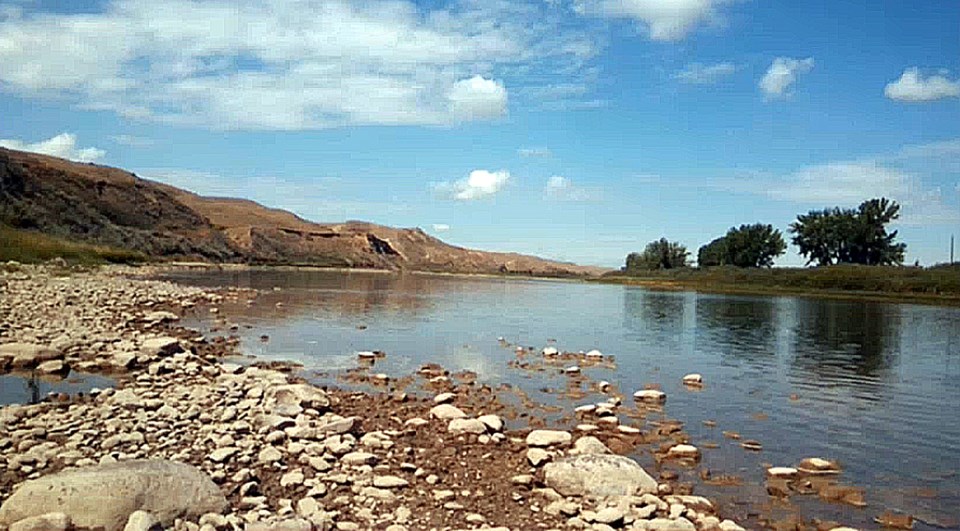INNISFAIL – The Mountain View Regional Water Services Commission (MVRWSC) is creating two committees to develop a full battle plan against this year’s developing drought that threatens to devastate central and southern Alberta.
Board representatives from the commission’s six-member communities met in Innisfail on Jan. 24 for a two-hour closed-door strategic planning meeting that had the drought issue as a priority.
In early January Rebecca Schulz, provincial minister of environment and protected areas, sent a letter to all municipalities to warn them that current significant drought conditions caused by last summer’s low rainfall and high temperatures could get worse later this year.
The Government of Alberta has identified a shortage of water in the South Saskatchewan River Basin.
The Red Deer River is the most northern river in the basin and is the source of water for the MVRWSC.
The commission draws water from the river west of Innisfail, and is treated in the Anthony Henday Water Treatment Plant.
The water is then moved though water lines to member communities, including Innisfail, Olds, Bowden, Didsbury, Carstairs and Crossfield.
Schultz’s letter outlined a four-part plan to communities on water conservation, along with a call to all water users to immediately start planning to use less water in 2024.
Right now, the province is at Stage 4 on its five-stage grading for its water management plan. Stage 5 is a province-wide emergency.
With Schulz’s call to action the MVRWSC has begun its move through a stepped process in the development of a drought plan, said Lance Colby, the chair of the commission’s board.
“No one is panicking. Everybody is very aware of the water situation and wants to get involved and do their part, whatever part we can play in this,” said Colby. “Everybody there at that meeting was committed to make it work, and in the best interests of all residents, and to abide by what the province wants.
“We're just trying to get ahead of it, so each town is prepared if we have a plan in place as to what we can do right away.”
Colby said two committees were created from the Jan. 24 meeting; a Drought Committee comprising of board members and chief administrative officers from each of the six member towns.
He said the Drought Committee will be looking at the various uses of water in each of the six-member communities.
The second one is a Technical Committee that will include senior managers from the Anthony Henday Water Treatment Plant and employees from each member municipality who have technical experience to manage water drawn from the Red Deer River.
“We're looking at everything,” said Colby. “We want the towns to give us an idea of what the restrictions would be.”
He said each of the six-members communities has been tasked to fill out a survey to identify the various uses and volumes of water that is used monthly.
Municipalities are also being asked to identify what they felt were the priorities in the communities’ water distribution.
The survey will identify institutions - such as hospitals, nursing homes, industrial use, commercial operations, and home use - and what water savings they might be able to make.
“We’re looking at the ones that you'd want to be careful of what you did, like a hospital and what they could cut back on, and the same for seniors’ lodges,” said Colby. “Those things would have to be looked at separately if it ever got for that.
“The biggest problem we have right now is we don't know what the government plan is for how much they're going to tell us to cut back.”
He said another question that has to be answered now is where the water is going in each of the six member communities.
“If we need to cut back where can we cut back if the government gives us a 20 or 25 pr cent cutback for each town? Each town has to look at individually what they can do,” said Colby. “If you have industrial, like car washes, that is one that has been cut back before. Your nice town has their own for trees and gardens and yard stuff, right?
“Each town has their own water limit.”
Meanwhile, Colby said both committees will get into action quickly. The Drought Committee will meet again on Feb. 5, while there is a plan for the Technical Committee to meet this week.
“What we'd like to do as well is to have someone from the provincial government come and talk to us and try to explain what they have planned,” said Colby.



